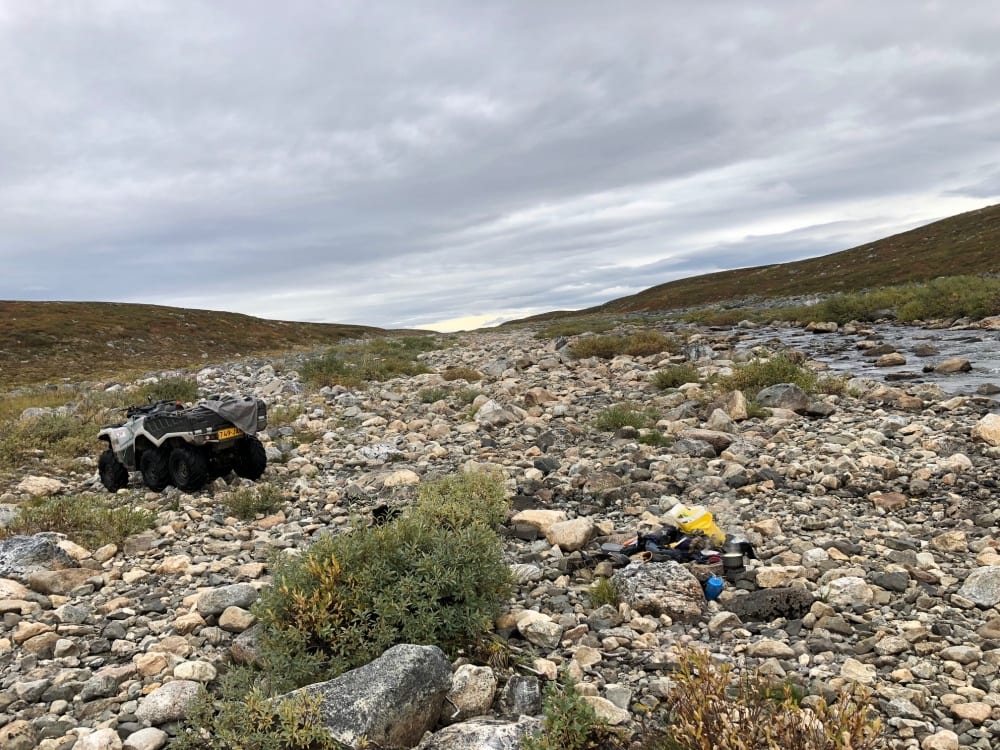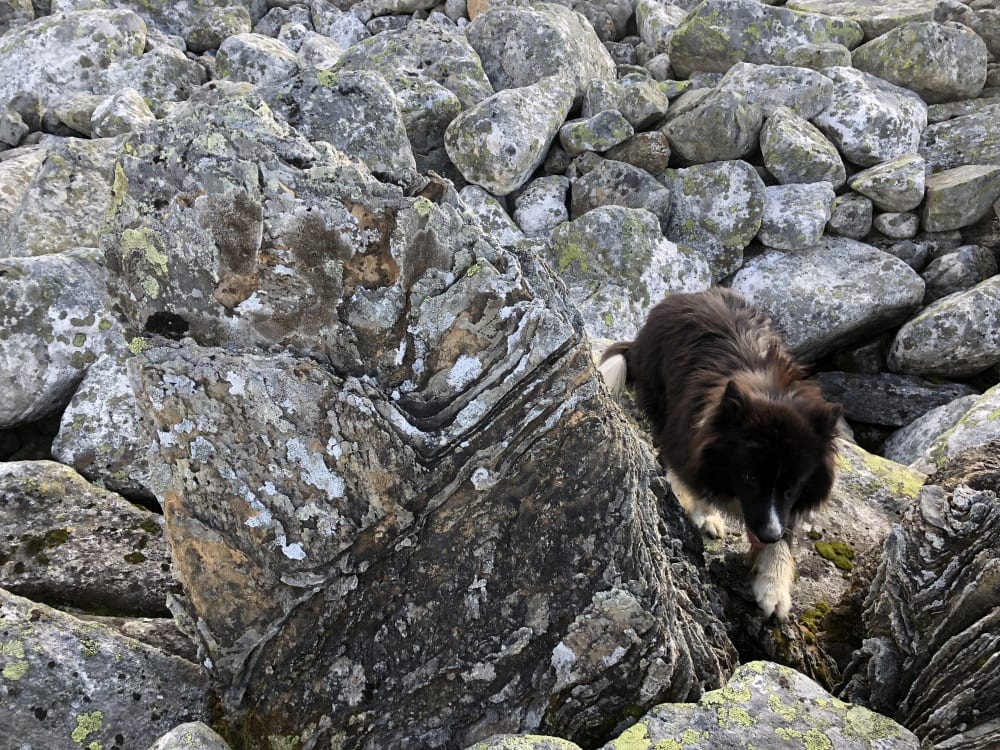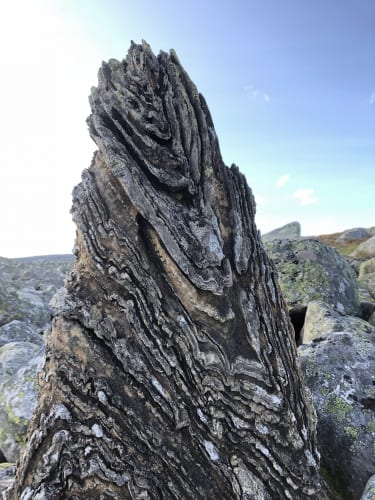This text is based on my everyday life in the fells of northwest Lapland, Finland. The story comes from the knowledge that arises from my life with my partner Oula, who has roots in reindeer-herding culture. That local tradition involves living with reindeer and following them by recognizing their way of surviving within a sensitive landscape. The story in this writing takes us up to the hills, which I as a visitor used to see as empty and called it wilderness. For Oula, the emptiness, full of different meanings, is his home. He sees things differently: something he remembers, something he knows, something he hopes, something he is afraid of, something he is waiting for. As a reindeer-herder, Oula uses his observations in his personal way. He carries memories, experiences, and information about his culture, his family, and the stages of his own life.
When I moved from the city in the south of Finland up to the north, my artistic way of working shifted from being an environmental artist into a way of living from which works of art emerge; my life and art are inseparable. I started to focus on the connection between the human and nonhuman through artistic thinking.1 Alongside my artistic research, I work as a mentor to artists-in-residence at the Art Bioartica Residency program in Kilpisjärvi Biological Station.
The narrative of this writing emerges from the six photographs accompanied by text messages sent to me by Oula. Here, time is the driving force in the accumulation of the narratives: it shapes the order in which Oula tells his story through his photographs and text messages. My reading is based on my lived experience with Oula in the particular landscape of northern Finland, and according our mutual pondering of time, and how it is expressed in those six moments.
1. “Lunch break”
Lunchtime arises from the rhythm of human need. Pauses express personal time. The photograph is taken in the summer, when the light does not tell time. There is a river; it is important to get water and wood for fire. The dry branches of the willow tree are easiest to ignite. Lunch break means stopping and preparing lunch at a random site. The break could take place in the upper reaches of the river or later under the stream. Oula chose that particular point along the flowing river for lunch, since Oula’s time syncs up with the time of the willows growing along the river and the stream at that particular instant. A pause is a special moment in which the physical elements mix with the place. Oula and that place come together: Oula drinks water and warms his food with fire. He makes a short, little fire, just on the stones. Fire provides presence and warmth. The lunch break interacts with the place, but afterwards nothing in the place reveals this pause taken. Soon, rain will clean the stones.
2. “Sharp”
Oula continues his journey with his reindeer dog, Biggo. Oula has the view of a reindeer herder. Living with reindeer is his cultural background. There are no reindeer in the picture, but some are nearby, and they are conscious of Oula and his dog. The presence of reindeer creates alertness. Reindeer give meaning to this journey and to his whole lifestyle. Even if reindeer are invisible, they define all his findings. The reindeer dog senses the path ahead in his own way and sometimes expresses his perception understandably. Oula explores the landscape with binoculars. He detects the reindeer that appear far from the horizon: they look like stones, but their movements reveal them to be reindeer.
Oula makes observations and conclusions based on his experience. He evaluates the movements of the reindeer. The key is to know the nature of the reindeer in that specific moment. During the summer, reindeer behave differently than in winter. In the summer, the movements of the reindeer are affected by the direction of the wind and its intensity. The weather also affects their passage, and weather variations change their direction. This knowledge of the nature of reindeer is combined with Oula’s memories, lived and told.
3. “Stone Place”
Oula’s direction of travel is determined by his experience and observations. He is aware of the direction. A destination can be sought in many ways: striving for the most direct path, following the terrain, or pursuing certain waypoints. Out of these possible choices, Oula runs to the edge of a wide rock. Among the mossy and rounded stones, one particular stone stands out. It has been thrown at some point in the history of the world into the folds of the fells. That stone differs from the round mossy stones.
4. “The Stone”
He is looking closer at the stone. The Sámi artist Nils-Aslak Valkeapää features the Sámi concept eadanas ealli in his art, a phrase that can be translated to mean “a somewhat strange animal.” In his poetry, eaidanas ealli is a reindeer that thrives at the edge of the reindeer herd, never in ahead or middle. Eaidanas ealli is staying nearly outside of the group. The term appears in one of Valkeapää’s self-portraits. It is one dimension of being. The oddity of the stone, its diversity and loneliness, reveal that strange creature, eadanas ealli. Solitude and difference exist in the world, and are common to all.
5. “With a guy”
Time exists in that stone in a special way. Time has drawn grooves into soft rock material. The stone means something different to Biggo than to Oula. Biggo does not necessarily notice the difference of the stone, but can find a good place to wee. They perceive the stone together. The guy is Biggo as well as the special stone.
6. “When do I exist?”
Oula calls the stone a self-portrait. He asks of himself if he is in the past or present. Does he exist in his memories or desires? Man and stone exist in the same reality, but in their own time. Many dimensions of being crystallize in the parallel of different times. The man, the dog, the stone all have their own times, and while he is paying attention to time, the question arrives: where and when do I exist?
Leena Valkeapää is an artist and researcher who lives in the wilderness in the northwest Lapland, near Kilpisjärvi. She has exhibited as a visual artist since 1988, and has produced public environmental artworks, including the rock wall piece Ice Veil (1999) in Turku. Her 2011 doctoral dissertation “Luonnossa, vuoropuhelua Nils-Aslak Valkeapään tuotanon kanssa” (“In the Nature: A Dialogue with Nils-Aslak Valkeapää’s Art”), proposed a dialogue with nature and its poets. Valkeapää takes part in the daily work of reindeer herding, as part of Sámi culture tradition. She is interested Sámi customs as engagements with the authenticity of a deeply individual experience with nature. Valkeapää works as a mentor at the Ars Bioartica Residency program.
- See Mika Hannula, Juha Suoranta, and Tere Vadén, eds., Artistic Research Methodology: Narrative, Power and the Public (New York: Peter Lang Publishers, 2014). I’m influenced by philosopher Juha Varto’s assertion that artistic thinking is connected to artistic research methodology. Within that perspective, my main aim as an artist is to “recognize the unique and stick with it” (Artistic Research Methodology, 153). ↩






